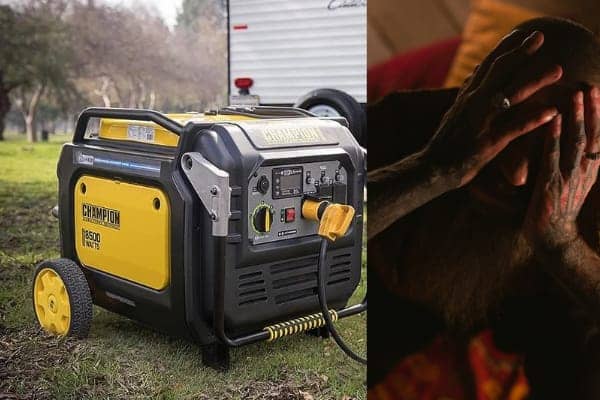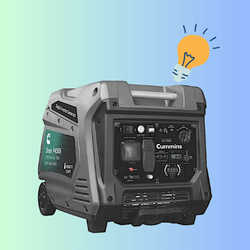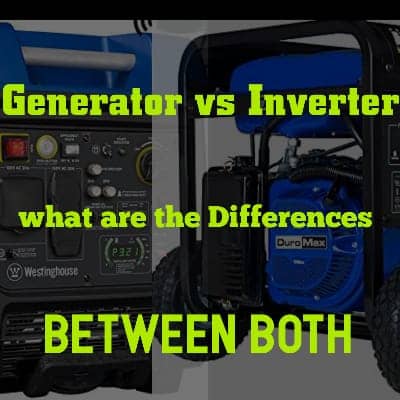
Mastering Champion Generators Problems
Champion generators have long been a reliable companion during power outages, outdoor adventures, and various electricity-dependent activities. However, just like any piece of equipment, they can sometimes encounter issues that require troubleshooting. Fear not! In this comprehensive guide, we’ll delve deep into the art of Champion generator troubleshooting, equipping you with the knowledge to diagnose and resolve issues like a seasoned pro.
Understanding Your Champion Generator
Prior to commencing our troubleshooting expedition, it’s imperative that we familiarize ourselves with the essential elements of a Champion inverter generators or Champion generators. These machines are powered by internal combustion engines running on gasoline, propane, or diesel. They work by converting mechanical energy from the engine into electrical energy through an alternator. Understanding this fundamental principle will be immensely helpful as we dive into troubleshooting.
Common Issues and Solutions: Champion Generators Problems
1: Understanding Power Output Issues
Imagine the scene: you’re all set to enjoy the steady hum of your trusty Champion generator, but instead, it sits there in eerie silence. No power, no electricity, just confusion. We’re here to unravel this mystery and guide you through the journey of figuring out what’s wrong and how to make things right.
You’ve done everything right—fuel’s flowing, the engine’s running smoothly—yet your devices are stubbornly lifeless. This is the puzzle of “no power output,” where your generator seems fine but won’t deliver the electricity you need.
Getting to the Bottom: Reasons and Fixes
1: Low Oil Level Woes:
Think of your Champion generator as a diligent guardian. It has a smart feature that prevents it from running on low oil levels to avoid damaging itself. It’s like a protective shield for the engine.
Fix: The solution is simple—check the oil level. If it’s too low, your generator won’t cooperate. Gently fill it up to the recommended level, and your generator might just spring back to life.
2. Circuit Breaker Conundrums:
Meet the circuit breaker, a quiet hero that stops electrical overload. Inside your generator’s control panel, it stands ready to act if things get risky.
Fix: Find the circuit breaker and see if it’s in a neither-‘ON’-nor-‘OFF’ state. If it is, that’s your issue. Move it to ‘OFF’ and then firmly back to ‘ON.’ This common hiccup, often due to too much load or a short circuit, can be easily fixed.
3. Troubles with the Automatic Voltage Regulator (AVR):
Enter the Automatic Voltage Regulator (AVR), the conductor of the generator’s power orchestra. It ensures a smooth flow of electricity. However, even conductors stumble at times.
Fix: If you suspect the AVR is acting up, consult your generator’s manual for help. Handling the AVR needs care—it’s crucial to your generator’s function.
Don’t let the silence baffle you any longer. With these insights, you’ll be back to enjoying the soothing hum of your generator in no time.
2: When the Engine Refuses to Start
Imagine a familiar scene – the reliable hum of your trusty generator during power outages suddenly fades to an eerie quiet. You press the start button, hoping for that reassuring engine growl, but instead, there’s only silence. Frustration builds as you grapple with an engine that stubbornly refuses to come to life. But fear not, as we’re about to delve into the world of generator mechanics, exploring the potential reasons behind this perplexing issue and uncovering solutions.
1. Fuel Woes: Unveiling the Lifeline
At the heart of every combustion engine lies a vital element: fuel. Imagine it as the lifeblood that keeps the engine roaring. Yet, like a blocked artery, stale fuel or clogged fuel filters can starve the engine of what it needs. To solve this fuel-themed puzzle, think about the most recent time you filled your generator with fuel. If it’s been a while, stale fuel might be the culprit. Begin by emptying the fuel tank and ridding it of old remnants. Then, like a rebirth, infuse the generator with fresh, high-quality fuel. This simple act might just give your mechanical companion its voice back.
2. Spark Plug Woes: Igniting the Flame
Visualize the spark plug as a silent magician within the engine, conjuring the spark that ignites the life-giving combustion. However, a dirty or faulty spark plug can halt this magic show. Just as a magician’s tools must be pristine, the spark plug’s electrode demands cleanliness and care. If the spark plug looks more like a relic than a spark-creator, it’s time for a replacement. Gently remove the old plug, install a new one, and witness the power of a well-timed spark that could reignite your generator’s vigor.
3. Choke Confusion: The Dance of Air and Fuel
The choke takes center stage during startup, fine-tuning the air-fuel mixture for ignition. Mishandling the choke is like stumbling over lines in a play, disrupting the harmony. The solution is straightforward: consult your generator’s manual, your script for this delicate performance. Configure the choke as the engineers who birthed your generator intended. Just like a conductor’s baton, the correct choke setting might coax your generator’s engine back to life.
So, when faced with a silent generator, remember this troubleshooting journey. From fuel freshness to spark plug renewal and choke configuration, you hold the keys to resurrecting your faithful generator.
3: Unstable Engine Operation:
At the core of intricate machines lies a steadfast ally – the generator. It faithfully provides power when electricity seems scarce. Yet, even the most dependable generators can occasionally exhibit puzzling behaviors that leave us perplexed. One such enigma is the “Unstable Engine Operation” – a perplexing dance of erratic surges that confound both newcomers and experienced mechanics alike. But fret not, for in the complex realm of engines, we will serve as your guiding light. We’ll shed light on potential causes and elegant solutions to this perplexing puzzle.
Troublesome Carburetor and Disrupted Fuel Flow
Think of a generator’s engine as a symphony, with delicate strings like a violin, and the carburetor as the conductor. Yet, what happens when this finely tuned instrument is marred by grime? A clogged carburetor, much like a blocked artery, could be the main reason behind the engine’s erratic surges. Picture a conductor with a confused baton – chaos takes over.
The world of mechanics offers solutions: a thorough cleaning or a revitalizing process for the carburetor. Seek guidance from your manufacturer’s instructions for this sacred task. With patience, disassemble the carburetor, cleanse every intricate part meticulously, and reassemble it with care. As you start the engine, envision a virtuoso performance, where fuel flows smoothly like a poetic melody.
Seductive Air Leak Whispers and the Mixture’s Tug of War
Imagine the engine’s heart as a fiery tango between air and fuel, perfectly balanced. But what if uninvited guests, in the form of air leaks, disrupt this intimate dance? These sneaky troublemakers introduce an unwelcome element, disturbing the vital partnership between air and fuel that fuels the engine’s song.
With keen observation, follow the path of air through the generator’s intake system. Hunt down elusive gaps and fractures that upset the engine’s delicate equilibrium. Replace damaged components with surgical precision, recognizing the importance of every piece in the symphony of mechanics.
Harmony Restored in the Engine’s Symphony
Standing at the crossroads of troubleshooting, a realm of possibilities stretches before you. The generator’s heart beats erratically, a mystery that resists simplicity but welcomes your creativity. In the recesses of the carburetor and the pathways of the intake system, you’ve unveiled the twin culprits behind this instability. Armed with insight and determination, you breathe life into the generator once more. Its engine responds, returning to a harmonious rhythm – a testament to your skill and the beauty of mastering mechanical symphonies.
4: Generator Overheating
In the world of generator troubles, there’s one foe that blazes brighter than the rest—overheating. It’s not just a minor inconvenience; it’s a serious menace that can jeopardize the very heart of your power supply. Imagine the generator’s engine working tirelessly to turn fuel into energy, generating a surge of heat. Usually, this heat is managed through a clever interplay of airflow and lubrication, maintaining the engine at the perfect temperature. But when this delicate balance falters, the specter of overheating emerges, threatening the generator’s critical components.
Unmasking the Culprits: Solving the Mystery of Overheating Like a skilled detective piecing together clues, identifying the causes of generator overheating is key to finding a solution. Let’s meet the two main suspects who often stoke the flames:
1: Blocked Air Vents:
The Silent Stranglehold Think of the generator’s air vents as its vital source of fresh air. These vents act like its very own nostrils, ensuring a smooth flow of air through its internal channels. However, when dust, debris, or unwanted intruders clog these pathways, disaster looms. The once unrestricted airflow turns into a suffocating gasp, leaving the engine starved of the oxygen it craves. This blockage triggers a rapid spike in internal temperature, much like a sauna in a sealed room.
Solution: A Gentle Revival Improve the air quality. Regularly inspect and clean the air vents, removing any debris that obstructs the passage. Envision it as a soothing ritual—a mindful practice that guarantees your generator breathes freely.
2: Low Oil Level:
The Engine’s S.O.S. At the core of every generator’s engine lies a symphony of metal parts, moving in perfect synchrony. This intricate dance requires the presence of oil—a magic potion that lubricates, cools, and prevents friction-related combustion. When the oil level dips, this harmonious ballet transforms into a cacophony of chaos. As metal grinds against metal, the resulting friction generates a surge of heat, endangering the engine’s delicate equilibrium.
Solution: Nourishing Elixir Just as a weary traveler seeks water to quench their thirst, your generator craves oil to stay cool. Regularly monitor the oil level and ensure it stays at the recommended mark. This straightforward action guarantees that the engine’s performance remains an elegant display rather than a blazing catastrophe.
5: Excessive Generator Noise
Oh, the soothing melody of a generator’s hum – a reassuring tune that signifies the presence of dependable machinery and a promise of uninterrupted power. But what if this melodious background transforms unexpectedly into a chaotic symphony of clangs and clatters? This is where the mystery of excessive noise comes into play – a disturbance that not only upsets the acoustic harmony but also hints at potential underlying issues within your reliable power companion. In this exploration, we’ll take a deep dive into the world of generator noise, uncovering its likely origins and revealing the solutions that can restore tranquility.
The Puzzle of Excessive Noise:
Imagine standing in front of your generator, ears attuned, and hopes high, only to be greeted by a cacophony that overshadows the usual hum. What magic is causing this disruption? Don’t fret, for within this sonic puzzle lies a trail of clues leading us to the core of the matter.
Possible Causes and How to Address Them:
1: Loose or Damaged Components:
Think of your generator’s inner workings as a realm of mechanical marvels, where panels, screws, and parts come together in a symphony of motion. However, even the most intricate orchestra can sometimes fall out of tune. Loose panels and wandering screws can transform your generator into a boisterous percussion ensemble, resulting in noise levels that defy reason.
Solution: Embark on an expedition into this mechanical wilderness armed with your repair tools. Carefully inspect every nook and cranny, securing any loose components with a confident yet gentle touch. If you encounter any damaged parts, replace them, as even a solitary flawed note can disrupt the entire symphony. As each piece is restored to its rightful place, the crescendo of noise will recede, leaving behind a harmonious melody of order.
2. Mitigating Vibrations:
Envision your generator as a graceful dance partner – each step in perfect harmony, every move a display of elegance. Yet, place this partner on an uneven stage, and the dance transforms into a dissonant uproar. In the realm of generators, the surface they rest upon holds the key to maintaining a harmonious hum.
Solution: Survey the terrain on which your generator resides. Look for stability and level ground, as even the slightest incline can set off a symphony of vibrations. If the ground doesn’t cooperate, introduce rubber pads into the equation – guardians against the vibrations that give rise to excessive noise. With a solid foundation underneath it, your generator will once again waltz its way into serenity.
In the journey to silence the cacophony, remember that every clatter and clang is a clue, guiding you towards restoring the harmonious melody that signifies a well-functioning generator.
Regular Maintenance to Prevent Issues
Owning a generator is like having a reliable source of power by your side, always ready to tackle darkness when it strikes. However, just like any trustworthy companion, your Champion generator needs a bit of care to stay dependable. The old saying “prevention is better than cure” holds especially true for generators. Imagine a world where the unsettling sound of malfunctioning equipment is a thing of the past—a world where power outages don’t disrupt your life. This ideal scenario can become reality through regular maintenance—a choreography that ensures your generator’s long life and keeps potential problems at bay.
The maintenance routine starts with a crucial step: changing the oil. Within your generator’s intricate machinery, oil acts as a protective guardian, lubricating the gears and reducing wear and tear. Your generator’s user manual will guide you on when to change the oil. Regular oil changes not only boost the engine’s performance but also help it stand strong against the effects of time.
Managing fuel is like preserving the potency of a magical potion. Fuel, like the elixir of life, can lose its power over time. So, it’s wise to use fresh fuel for your generator. However, there might be times when your generator stays dormant. In such cases, adding a fuel stabilizer to the reservoir works like a protective spell. This spell prevents fuel from deteriorating, keeping it effective and ensuring your generator wakes up with the same strength as before.
Air, just like words to a storyteller, is vital for your generator. Think of the air filter as a guardian against dust and debris, shielding your generator’s internal parts. Regularly cleaning or replacing the air filter is essential to maintain proper air intake. A blocked or damaged filter can lead to engine issues, disrupting your generator’s power performance.
At the core of your generator lies the spark plug, the poet responsible for ignition. Regular inspections help you check its condition and the gap it spans. If the spark plug is dirty or damaged, it’s your responsibility to replace it. The spark plug conducts the ignition’s symphony, and without it, your generator could fall into silence.
Just as gods don’t carry the weight of the world, your generator shouldn’t carry too heavy a load. Load management ensures your generator operates within its limits. Overloading the generator is like making a runner carry a mountain—it’ll stumble and fail. Practicing proper load management ensures your generator’s longevity and reliability, offering you unwavering support when you need it most.
In the journey of owning a generator, the melody of regular maintenance plays a vital role. It’s a routine that protects your generator’s well-being—a promise that keeps problems away and guarantees uninterrupted power. Through the dance of oil changes, the story of fuel management, the care for air filters, the attention to spark plugs, and the mastery of load management, you’ll discover the key to unlocking your generator’s full potential. It’s a harmonious ode to the art of prevention—a melody that echoes through time, empowering you to stand tall against life’s uncertainties.
Wrap-Up
In a nutshell, Champion generators are like dependable heroes, stepping in to save the day with electricity when we need it most. However, even the mightiest machines can sometimes stumble upon hurdles. Now that you’ve delved into this guide, you’re all set to tackle and conquer those typical problems that might pop up. Just keep in mind – getting to know the bits and pieces of your generator, giving it some regular TLC, and approaching issues step by step will ensure your Champion generator keeps humming along without a hitch for many years ahead.



